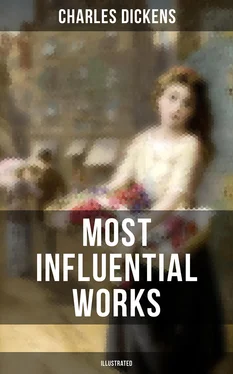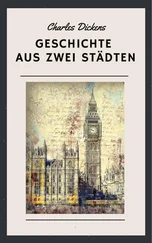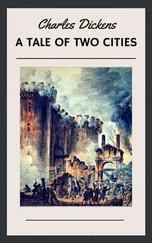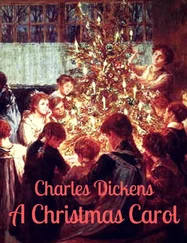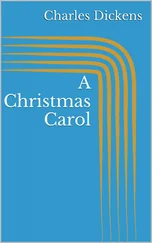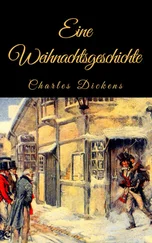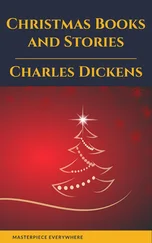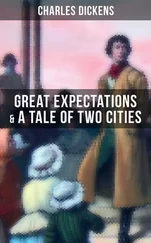For such reasons, I was very glad when ten o’clock came and we started for Miss Havisham’s; though I was not at all at my ease regarding the manner in which I should acquit myself under that lady’s roof. Within a quarter of an hour we came to Miss Havisham’s house, which was of old brick, and dismal, and had a great many iron bars to it. Some of the windows had been walled up; of those that remained, all the lower were rustily barred. There was a courtyard in front, and that was barred; so we had to wait, after ringing the bell, until some one should come to open it. While we waited at the gate, I peeped in (even then Mr. Pumblechook said, “And fourteen?” but I pretended not to hear him), and saw that at the side of the house there was a large brewery. No brewing was going on in it, and none seemed to have gone on for a long long time.
A window was raised, and a clear voice demanded “What name?” To which my conductor replied, “Pumblechook.” The voice returned, “Quite right,” and the window was shut again, and a young lady came across the courtyard, with keys in her hand.
“This,” said Mr. Pumblechook, “is Pip.”
“This is Pip, is it?” returned the young lady, who was very pretty and seemed very proud; “come in, Pip.”
Mr. Pumblechook was coming in also, when she stopped him with the gate.
“Oh!” she said. “Did you wish to see Miss Havisham?”
“If Miss Havisham wished to see me,” returned Mr. Pumblechook, discomfited.
“Ah!” said the girl; “but you see she don’t.”
She said it so finally, and in such an undiscussible way, that Mr. Pumblechook, though in a condition of ruffled dignity, could not protest. But he eyed me severely, — as if I had done anything to him! — and departed with the words reproachfully delivered: “Boy! Let your behavior here be a credit unto them which brought you up by hand!” I was not free from apprehension that he would come back to propound through the gate, “And sixteen?” But he didn’t.
My young conductress locked the gate, and we went across the courtyard. It was paved and clean, but grass was growing in every crevice. The brewery buildings had a little lane of communication with it, and the wooden gates of that lane stood open, and all the brewery beyond stood open, away to the high enclosing wall; and all was empty and disused. The cold wind seemed to blow colder there than outside the gate; and it made a shrill noise in howling in and out at the open sides of the brewery, like the noise of wind in the rigging of a ship at sea.
She saw me looking at it, and she said, “You could drink without hurt all the strong beer that’s brewed there now, boy.”
“I should think I could, miss,” said I, in a shy way.
“Better not try to brew beer there now, or it would turn out sour, boy; don’t you think so?”
“It looks like it, miss.”
“Not that anybody means to try,” she added, “for that’s all done with, and the place will stand as idle as it is till it falls. As to strong beer, there’s enough of it in the cellars already, to drown the Manor House.”
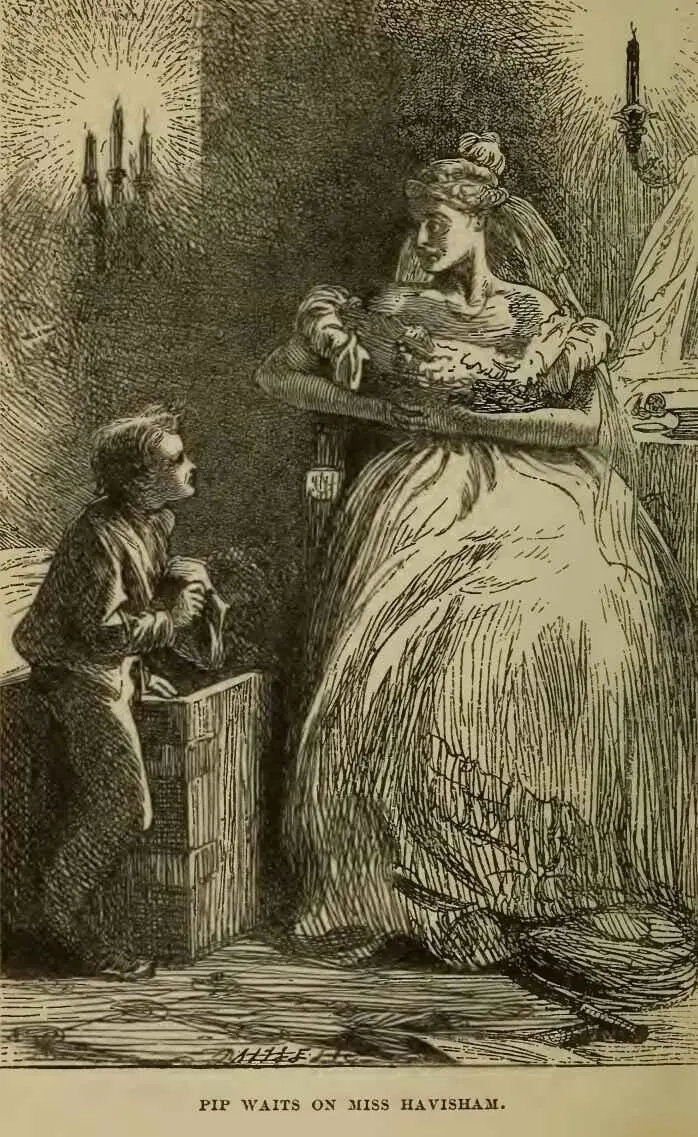
“Is that the name of this house, miss?”
“One of its names, boy.”
“It has more than one, then, miss?”
“One more. Its other name was Satis; which is Greek, or Latin, or Hebrew, or all three — or all one to me — for enough.”
“Enough House,” said I; “that’s a curious name, miss.”
“Yes,” she replied; “but it meant more than it said. It meant, when it was given, that whoever had this house could want nothing else. They must have been easily satisfied in those days, I should think. But don’t loiter, boy.”
Though she called me “boy” so often, and with a carelessness that was far from complimentary, she was of about my own age. She seemed much older than I, of course, being a girl, and beautiful and self-possessed; and she was as scornful of me as if she had been one-and-twenty, and a queen.
We went into the house by a side door, the great front entrance had two chains across it outside, — and the first thing I noticed was, that the passages were all dark, and that she had left a candle burning there. She took it up, and we went through more passages and up a staircase, and still it was all dark, and only the candle lighted us.
At last we came to the door of a room, and she said, “Go in.”
I answered, more in shyness than politeness, “After you, miss.”
To this she returned: “Don’t be ridiculous, boy; I am not going in.” And scornfully walked away, and — what was worse — took the candle with her.
This was very uncomfortable, and I was half afraid. However, the only thing to be done being to knock at the door, I knocked, and was told from within to enter. I entered, therefore, and found myself in a pretty large room, well lighted with wax candles. No glimpse of daylight was to be seen in it. It was a dressingroom, as I supposed from the furniture, though much of it was of forms and uses then quite unknown to me. But prominent in it was a draped table with a gilded looking-glass, and that I made out at first sight to be a fine lady’s dressing-table.
Whether I should have made out this object so soon if there had been no fine lady sitting at it, I cannot say. In an armchair, with an elbow resting on the table and her head leaning on that hand, sat the strangest lady I have ever seen, or shall ever see.
She was dressed in rich materials, — satins, and lace, and silks, — all of white. Her shoes were white. And she had a long white veil dependent from her hair, and she had bridal flowers in her hair, but her hair was white. Some bright jewels sparkled on her neck and on her hands, and some other jewels lay sparkling on the table. Dresses, less splendid than the dress she wore, and half-packed trunks, were scattered about. She had not quite finished dressing, for she had but one shoe on, — the other was on the table near her hand, — her veil was but half arranged, her watch and chain were not put on, and some lace for her bosom lay with those trinkets, and with her handkerchief, and gloves, and some flowers, and a Prayer-Book all confusedly heaped about the looking-glass.
It was not in the first few moments that I saw all these things, though I saw more of them in the first moments than might be supposed. But I saw that everything within my view which ought to be white, had been white long ago, and had lost its lustre and was faded and yellow. I saw that the bride within the bridal dress had withered like the dress, and like the flowers, and had no brightness left but the brightness of her sunken eyes. I saw that the dress had been put upon the rounded figure of a young woman, and that the figure upon which it now hung loose had shrunk to skin and bone. Once, I had been taken to see some ghastly waxwork at the Fair, representing I know not what impossible personage lying in state. Once, I had been taken to one of our old marsh churches to see a skeleton in the ashes of a rich dress that had been dug out of a vault under the church pavement. Now, waxwork and skeleton seemed to have dark eyes that moved and looked at me. I should have cried out, if I could.
“Who is it?” said the lady at the table.
“Pip, ma’am.”
“Pip?”
“Mr. Pumblechook’s boy, ma’am. Come — to play.”
“Come nearer; let me look at you. Come close.”
It was when I stood before her, avoiding her eyes, that I took note of the surrounding objects in detail, and saw that her watch had stopped at twenty minutes to nine, and that a clock in the room had stopped at twenty minutes to nine.
Читать дальше
